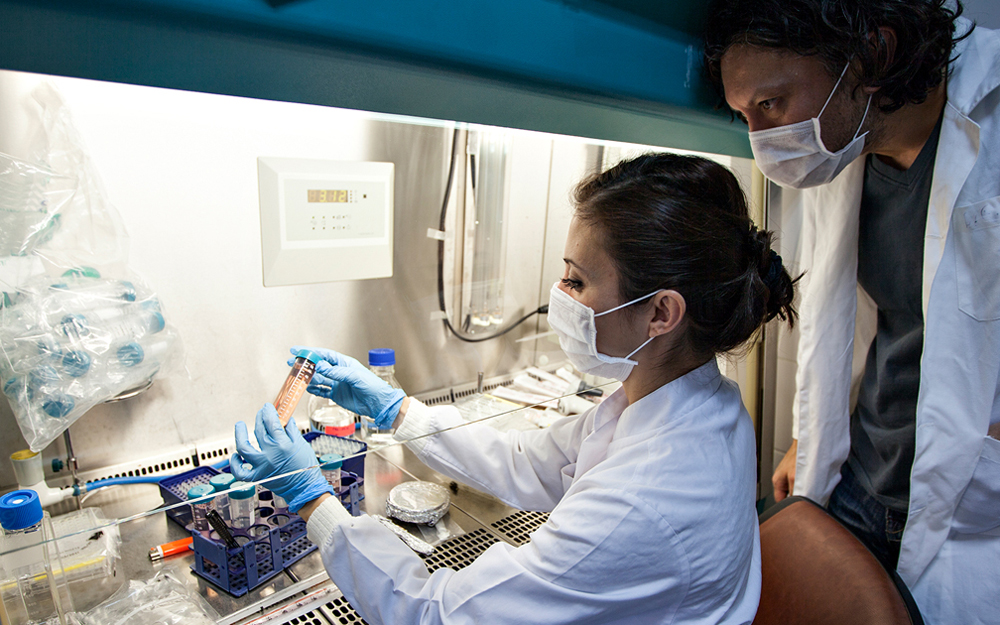Cedars-Sinai Blog
Gaining Ground on HIV/AIDS
Apr 08, 2019 Cedars-Sinai Staff

When news spread in early 2019 that a second person had been cleared of HIV, the virus that causes AIDS, it renewed hope that a safe and scalable solution to the global epidemic of HIV/AIDS is possible.
While the breakthrough is promising, there's another HIV-related update doctors want you to know about: Reducing HIV infections and HIV-related deaths to historically low levels is within reach now—even without a cure.
Medical advances
A lot has changed since HIV/AIDS cases peaked in the US in the early 1990s.
Back then, fear and uncertainty surrounded the disease and people often viewed a positive diagnosis as a death sentence.
Now there are proven protection methods and ever-improving treatment options that are allowing people with HIV/AIDS to live fuller lives with fewer side effects.
"It's a really fascinating and evolving world," says Dr. Benjamin Bluen, an infectious disease specialist at Cedars-Sinai.
"I encourage people to take advantage of the therapies we have now and the preventive measures that were not available years ago."
In the Newsroom: Remembering Patients Treated in Pioneering AIDS Unit
Improving outcomes
Quality of life has improved considerably for people living with HIV/AIDS, Dr. Bluen says.
The HIV virus can often be controlled with one or two pills per day and with medications that are far better tolerated than in previous years.
Previous medications had significant side effects on the pancreas, kidneys, and liver. Nerve pain, fat redistribution, and skin changes also were more common.
For younger patients who are taking more advanced medications, there are still long-term concerns—such as kidney function and osteoporosis (bone density loss). As patients with HIV age, conditions such as diabetes, high blood pressure, and high cholesterol must be monitored and controlled closely.
"HIV is much easier to manage nowadays," Dr. Bluen says. "But it's still something that will always affect one's life."
Revolutionary prevention
One preventive medication, called pre-exposure prophylaxis, or PrEP, has been revolutionary in the fight against the disease, Dr. Bluen says.
PrEP lowers the risk of contracting HIV from sex by more than 90% and from drug injections by nearly 50%, studies show.
But the pill is not a perfect solution, Dr. Bluen says. It must be taken daily and does not protect against other sexually transmitted infections.
Those taking PrEP still need to practice safe sex and get tested regularly.
"There's definitely a concern that people taking daily PrEP have a sense of security and stop using barrier protection, such as condoms," Dr. Bluen says.
"We are seeing increasing cases of syphilis, gonorrhea, and chlamydia and this is worrisome. Gonorrhea, for instance, has developed mechanisms to resist most antibiotics to the point where injectable antibiotic therapy is needed."
"It's important that we encourage people to break social stigmas and to talk to their doctor so they can get the care they need to prevent or manage this disease."
Prevention is key
While most people don't need PrEP, everyone should practice prevention:
- Use condoms properly
- Limit your number of sexual partners
- Avoid risky behavior, such as unprotected sex with multiple partners or injecting drugs with shared needles
- Get tested annually for HIV and other sexually transmitted diseases
Those at higher risk, such as gay men or people with an HIV-positive partner, should talk with their doctor about preventive medications like PrEP.
Challenges remain
The annual number of new HIV diagnoses—including 38,739 in 2017—has plateaued in recent years and isn't dropping, according to the Centers for Disease Control and Prevention. And new diagnoses have increased among some groups, most notably African-American and Latino gay men, showing there is still much work to be done.
"It's important that we encourage people to break social stigmas and to talk to their doctor so they can get the care they need to prevent or manage this disease," Dr. Bluen says.

